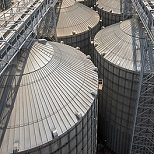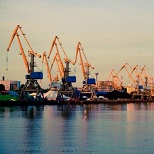Law of Ukraine on Concessions: Pros and Contras before Voting
The acting Cabinet of Ministers led by Volodymyr Groisman initiated the draft law development in summer 2016. The EBRD tender opted for the international lawyers Hogan Lovells to head the team of drafters participated also by Ministry of Economic Development and Trade and Ministry of Infrastructure, in particular its PPP Project Management Office SPILNO funded by foreign donors. Actually, MIU started considering the concession as a prospective PPP pattern back in 2015 under Andrii Pyvovarskii when the state-owned stevedoring companies of Olvia and Kherson ports as well as the ferry complex of the then Illichevsk now Chornomorsk port were defined as pilot project sites.
In April 2018 Verkhovna Rada (the Parliament) voted for the bill adoption in the first reading. There were only 4 contra votes against the firm 240 pro. The bill was strongly supported by the two major business associations ACC and EBA. President, Prime Minister, a lot of top government officials and some private port operators, in particular Risoil S.A., though the business insisted on a number of serious amendments to be provided.
The mentioned Olvia and Kherson pilot projects are at the homestretch, Tender Committee has already held its first session in early March, from late April the official announcement and consequent bidding is anticipated. The projects in force have been developed with account of both scenarios – with the new Law on Concession and without it. Moreover, it was stressed that the old Law on Concession would do anyway, being somewhere clumsy though failing to stop the concession, as the head of SPILNO Taras Boichuk noted.
The Government expects around 85Bn UAH of annual incomes from these projects.
There are already some other state-owned ports waiting their turn for concession. Minister Volodymyr Omelian said that after a long discussion on public port stevedores, it was decided to opt for the concession format of their future. Thus, the concession feasibility study (FS) of concession of Chornomorsk ferry terminal is going to be ordered and prepared within this year followed shortly by tender procedures commencing. Further on, the first six berths of the same port used for box handling last spring lured the port business giant Hutchison Ports with Ukrainian officials very friendly and the landlord-lease option considered, yet as per some off-record information payment conditions came too repellent for the Chinese side, so the latter decided to wait for the new concession law.
Another very attractive object is the public stevedore of Yuzhny Port. Last September the pre-FS was approved by MIU, however it was not endorsed officially. As per the ministry, there are several schemes considered for an investor to assign minimum 100M USD laid in this business. With the full-scale FS requiring at least two years of development, the concession could be launched not earlier than 2021-22.
There are several different sides striving to block the process.
First and evident it’s the public companies management having its own well-built mechanisms of earning big monies from port operations like interest from large purchases etc.
Second and maybe unexpected it’s the private stevedoring business successfully enlarging its terminals’ throughput on account to very weak competition of the public sector. A powerful concessionaire with his mighty cargo base and huge funds to invest in modernisation of assets is going to cut their profits by taking away the cargo flows.
The labour force and trade unions have but declared a full-scale war against the concession defending their wages and social guarantees due to the absence of any legal obstacles both in force and the draft towards losses of their jobs and denial of collective bargaining agreements by would-be concessionaires.
Some local business tycoons also oppose the new law preferring privatisation more prospective option for the public port assets.
Concession as the form of public-private partnership for business development is a fundamental part of any rising economy, embracing one-third of the total number of investments coming nowadays to such economies worldwide, and Ukraine should take this trend into account and employ this instrument to draw funds and develop its economy.
Thanks to the new law PPP projects will be possible in road construction, civil engineering, health protection, and other spheres. Say, Ministry of Health is really waiting to it in order to realise its three first pilot projects. A major European logging operator Holzindustrie Schweighofer shows interest to forest concession, Ukrainian railway plans to use concession to invest in development of passenger stations, Khmelnitskii and Mykolaiv being apparently the first ‘pilots’. Just as well MIU gets ready for airports concessions – namely Lviv and Kyiv-Boryspil, having in mind smaller regional airports too. As for KBP, earlier Mitsubishi Corporation expressed the interest in concession of it, which would potentially bring some €2.5Bn as investments and tax inflows.
In mid March very complicated issues of land tenure and some others were discussed in Rada’s Economical Policy Committee, and the next session is scheduled on late April. MIU believes that passing the Committee is the hardest task for the bill after which it is going to obtain majority of the Parliament votes.
However, some MPs agree that the draft scarcely will be adopted after the first round of presidential elections, yet there are rather good chances for its further consideration by Rada within the current session and high possibility of the positive result.
The Committee is to discuss the bill on 24th April and pass it further for voting or return for refurbishment. The second option is going in fact to ‘can’ the existing port public operators management pattern leading to their decline, tampering with money flows and purchases, lack of funds for modernisation and consequent loss of cargoes and therefore profits to private terminals.
a brief translation from: a source

Probing Virgin Ground: Worries of international consultants in Ukraine Ukraine’s long proclaimed struggle for the foreign direct inve...
.jpg)
Ukrainian Law on Inland Water Transport Finally in Force President of Ukraine Volodymyr Zelensky has signed the Law on In...

Feasibility study for the concession of the container terminal “Chornomorsk” ready in early 2021 The working Group on the implementation...
 November Transport, Shipping & Port News2020.12.04
November Transport, Shipping & Port News2020.12.04Dear Reader! Our monthly digest is confined to ports, terminals, shipping and transport of Ukraine. Ukrzaliznyts...

Ukraine as a littoral state commanding most of the Black Sea north coast along with the Azov Sea north occupies a strate...
 Opportunities in the Ukraine2019.07.10
Opportunities in the Ukraine2019.07.10At the moment there is a concession pilot project conforming to European norms under way for the public stevedoring companies in Olvia (form...
 Endgame or a Path to Possibilities?2019.05.24
Endgame or a Path to Possibilities?2019.05.24Ukrainian port industry is growing rapidly and the upcoming vote for concession legislation should only confirm this trend. ...

1. Who’s pushing? The acting Cabinet of Ministers led by Volodymyr Groisman initiated the draft law development in summer 2016. The EBRD...
 A step in the right direction2018.08.27
A step in the right direction2018.08.27For years, it has been the worst-kept secret for any foreign investor that port concession tender conditions in Ukraine were often drafted t...

Until recently, investing in Ukrainian port infrastructure was considered quite risky, due to an outdated regulatory framewor...



 Odessa, 65014, Ukraine, 1 а, Gretska St
Odessa, 65014, Ukraine, 1 а, Gretska St
